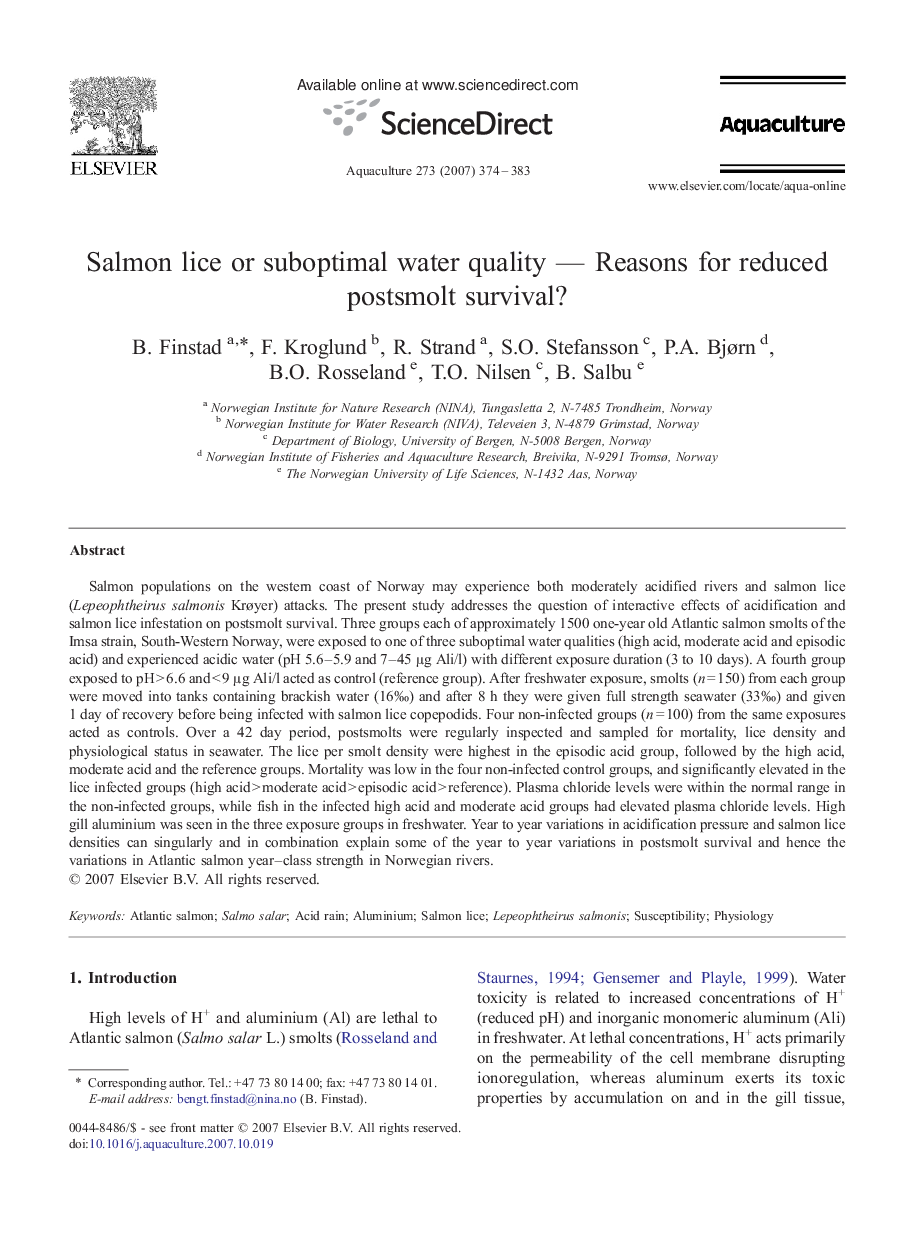| کد مقاله | کد نشریه | سال انتشار | مقاله انگلیسی | نسخه تمام متن |
|---|---|---|---|---|
| 2425118 | 1552969 | 2007 | 10 صفحه PDF | دانلود رایگان |

Salmon populations on the western coast of Norway may experience both moderately acidified rivers and salmon lice (Lepeophtheirus salmonis Krøyer) attacks. The present study addresses the question of interactive effects of acidification and salmon lice infestation on postsmolt survival. Three groups each of approximately 1500 one-year old Atlantic salmon smolts of the Imsa strain, South-Western Norway, were exposed to one of three suboptimal water qualities (high acid, moderate acid and episodic acid) and experienced acidic water (pH 5.6–5.9 and 7–45 μg Ali/l) with different exposure duration (3 to 10 days). A fourth group exposed to pH > 6.6 and < 9 μg Ali/l acted as control (reference group). After freshwater exposure, smolts (n = 150) from each group were moved into tanks containing brackish water (16‰) and after 8 h they were given full strength seawater (33‰) and given 1 day of recovery before being infected with salmon lice copepodids. Four non-infected groups (n = 100) from the same exposures acted as controls. Over a 42 day period, postsmolts were regularly inspected and sampled for mortality, lice density and physiological status in seawater. The lice per smolt density were highest in the episodic acid group, followed by the high acid, moderate acid and the reference groups. Mortality was low in the four non-infected control groups, and significantly elevated in the lice infected groups (high acid > moderate acid > episodic acid > reference). Plasma chloride levels were within the normal range in the non-infected groups, while fish in the infected high acid and moderate acid groups had elevated plasma chloride levels. High gill aluminium was seen in the three exposure groups in freshwater. Year to year variations in acidification pressure and salmon lice densities can singularly and in combination explain some of the year to year variations in postsmolt survival and hence the variations in Atlantic salmon year–class strength in Norwegian rivers.
Journal: Aquaculture - Volume 273, Issues 2–3, 18 December 2007, Pages 374–383